Affiliate disclosure: This post may contain affiliate links. Please see our Privacy Policy.
Chickweed tincture is a cooling herbal remedy for digestive issues, skin problems, lung ailments, and inflammation. Its antimicrobial, astringent, anti-inflammatory, and demulcent properties may help treat these conditions. This helpful herb is common in springtime nearly worldwide. It’s easy to recognize and easy to use. You can make a chickweed tincture at home with just a few ingredients and a little bit of time.
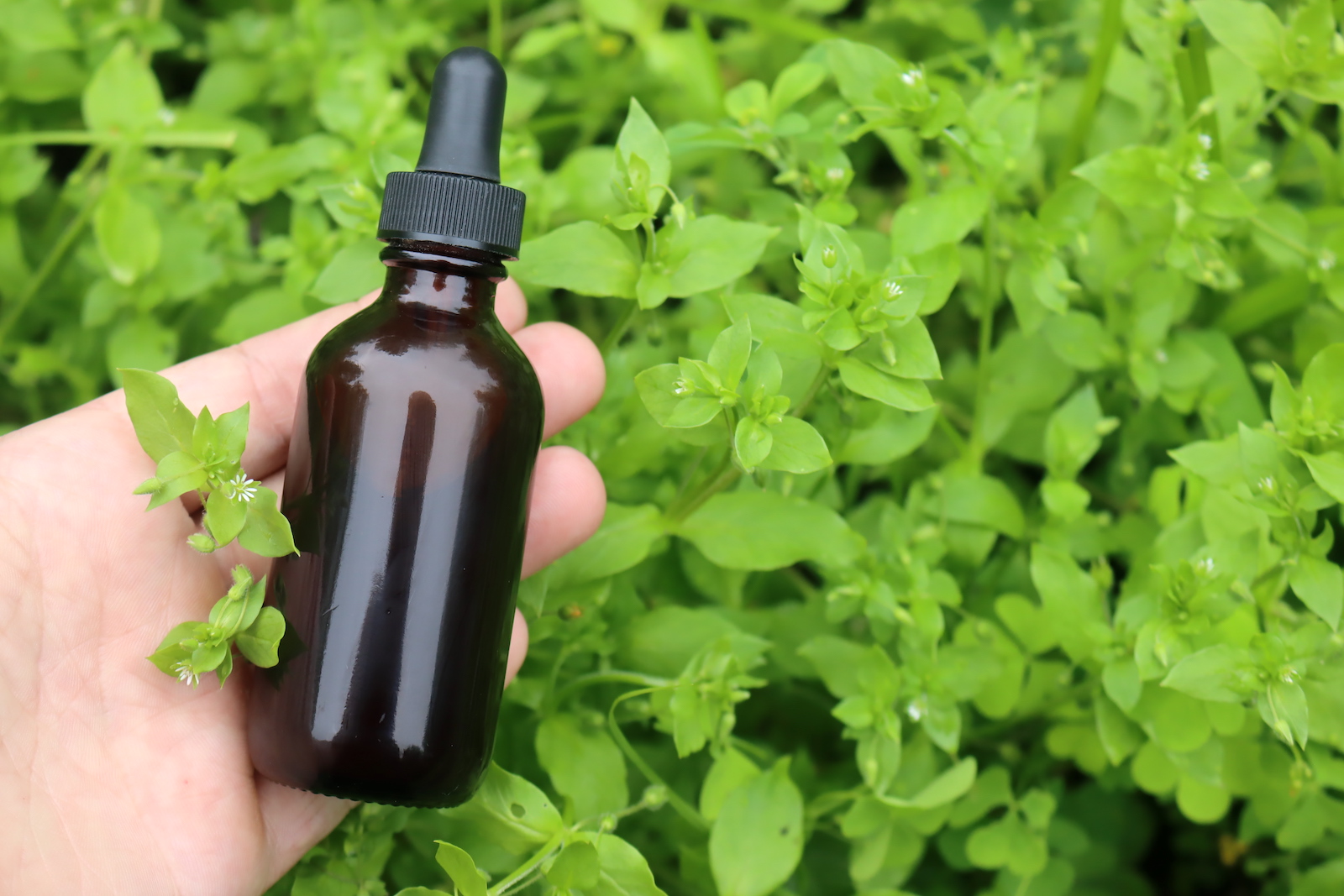
Table of Contents
This powerful little herb starts popping up in early spring and is a popular choice in culinary and herbal medicine traditions.
Its cooling, demulcent, astringent, anti-inflammatory, and antimicrobial properties can help soothe and treat coughs, bronchitis, acne, rashes, arthritis pain, and constipation.
Chickweed is also notably high in iron, B vitamins, and zinc. In the past, herbalists have used chickweed to treat iron deficiency anemia.
It’s also a helpful plant for culinary use and livestock. Chickweed is a tasty early spring green that’s great for salads, pestos, and other dishes. As the name chickweed suggests, chickens and wild birds particularly enjoy the plant, as do some other livestock, such as sheep.
Chickweed (Stellaria media) is native to Eurasia but has naturalized almost worldwide and is generally easy to find. It has a sprawling growth habit and flourishes in the cool, moist weather of spring. It commonly grows in gardens, farmlands, waste areas, and meadows.
This little weed is so common that you’ve probably seen it before without realizing it. You can recognize chickweed by its star-shaped little white flowers, light green, almost succulent, opposite leaves, and its one or rarely two lines of hair running down the stems.
A few other plants, including the non-edible radium weed (Euphorbia peplus), look similar to chickweed. Always be 100% certain of your identification before using a plant in medicinal or culinary preparations. This guide will help you with identifying chickeweed.
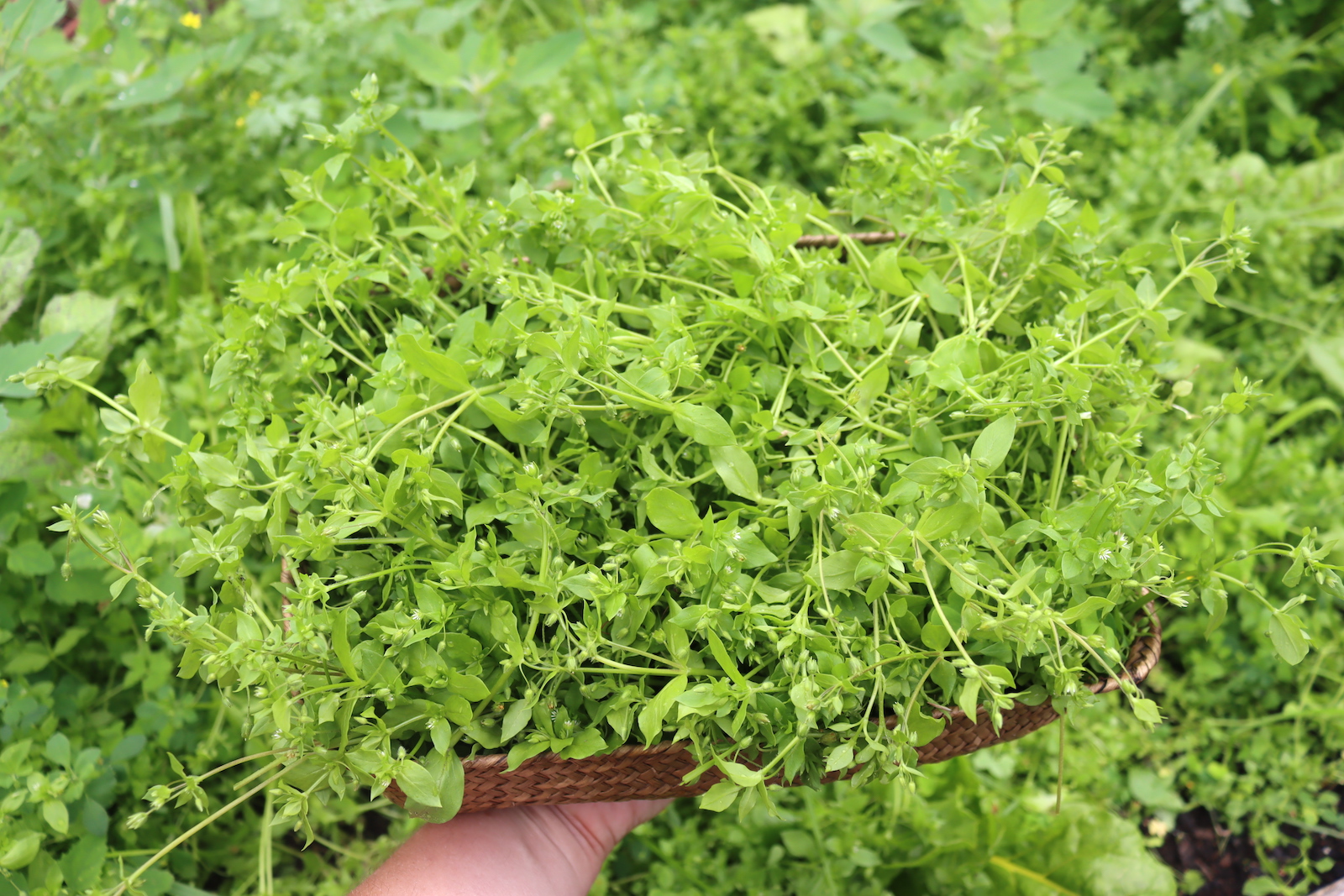
(Always consult your doctor or a clinical herbalist before trying any new herbal remedy, as there’s always the possibility of unintended consequences, allergic reaction, or interactions with other medication. If you’re harvesting wild plant material, make sure you’re 100% confident in your identification and consult multiple sources for your ID. The following is based on my research and experience, but I don’t claim to have any certifications that would qualify me to advise you on your health. Please do your own research and always verify with multiple reputable sources.)
Chickweed Tincture Uses
Herbalists use chickweed tinctures both topically and internally to treat a variety of ailments.
Topically, chickweed tincture is used for:
- Soothing Rashes and Skin Irritation
- Treating Acne
- Reducing Inflammation
- Promoting Healing in Small Cuts and Wounds
- Treat Fungal Infections of the Skin
Internally, chickweed tincture is used to:
- Soothing Coughs, Bronchitis, and Respiratory Issues
- Treating Constipation and Digestive Issues
- Reducing Inflammation
- Treating Iron Deficiency
Additionally, the herb is currently being investigated for its potential:
- Weight Loss Support
- Anti-diabetic Properties
In these cases, research is ongoing, and more work is needed to establish whether or not the benefits are scientifically significant.
Benefits of Chickweed Tincture
Chickweed has a long history of use in herbal tradition, particularly as a remedy for itchy skin conditions. Famous English herbalist John Gerard recommended using chickweed to treat mange in his Herball, or Generall Historie of Plantes, first published in 1597.
Today, it remains a popular choice for its cooling and soothing effect on various skin issues. A 2014 mice study found that chickweed has mild analgesic and anti-inflammatory properties, possibly contributing to its use as a skin treatment.
Chickweed may also be effective against some fungal skin infections, too. A 2018 study found that another type of Chickweed extract made from Stellaria citrifolia effectively treated ringworm, a highly contagious fungal infection of the skin and scalp.
Historically, chickweed was also a common choice for certain lung ailments like bronchitis. Little modern research has focused on this use. However, chickweed may have mild expectorant properties, meaning that it loosens mucus, helping you cough. Chickweed also has antioxidant and anti-inflammatory activity that could help treat these conditions.
Chickweed has also been used for digestive disorders. The same 2014 study that reported that chickweed has analgesic and anti-inflammatory properties when used externally on mice also found that these same properties work internally. The mice had fewer pain and inflammation symptoms when dosed with acetic acid.
In the past, chickweed was also commonly eaten as a culinary herb both for its flavor and nutritional value. Chickweed is high in a number of important vitamins and minerals including iron, making it a popular choice for treating anemia. Reportedly, some sailors also preserved chickweed in vinegar to eat to help ward off scurvy, a vitamin C deficiency.
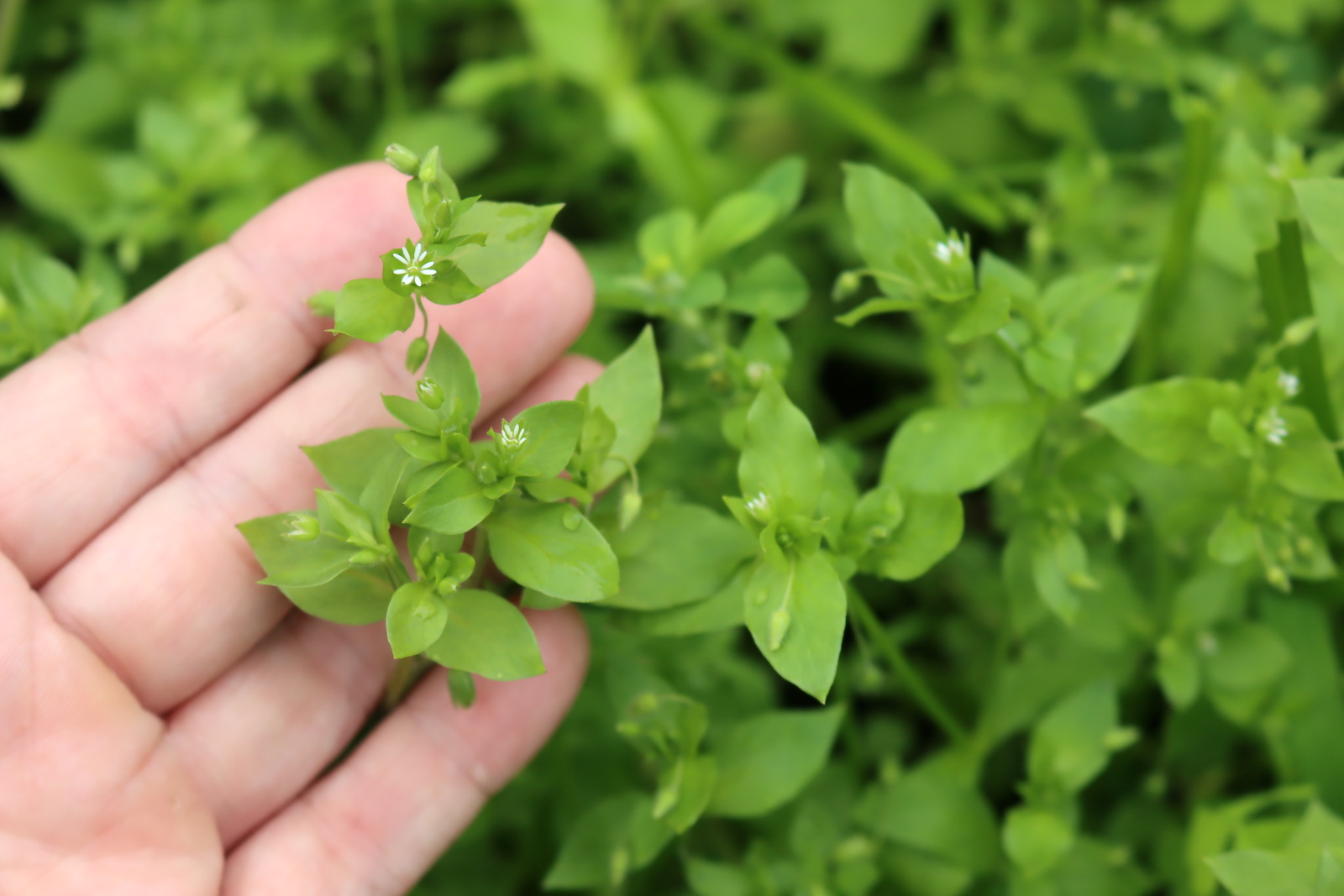
In modern times, more researchers are looking into chickweed for its anti-diabetes and weight-loss properties. A 2012 study on mice found that chickweed may inhibit digestive enzymes, delaying the absorption of fats and carbohydrates and helping with weight loss. A further mouse study published in 2020 showed that chickweed may lower blood sugar and hemoglobin A1C, possibly helping to prevent diabetes.
Chickweed doses may vary with the intended use and body size. Generally, chickweed is a very safe herb, and herbalists recommend taking 1 to 2 droppers full 2 to 3 times per day. You can also use the tincture externally as needed.
If you’re unfamiliar with chickweed, always begin with a small amount, both internally and externally. Some people have chickweed allergies. Chickweed is high in saponins, and consuming large amounts may cause nausea.
When you’re pregnant, your body releases progesterone to help you put on extra weight to support the baby. Hormonal birth control mimics this and can cause weight gain. Regular consumption of chickweed has been shown to block this weight gain in mice and can help prevent the weight gain associated with birth control.
Besides tincture, wild foraged chickweed can be used for making chickweed salve, as well as teas, vinegars, or simply eaten fresh as a salad green.
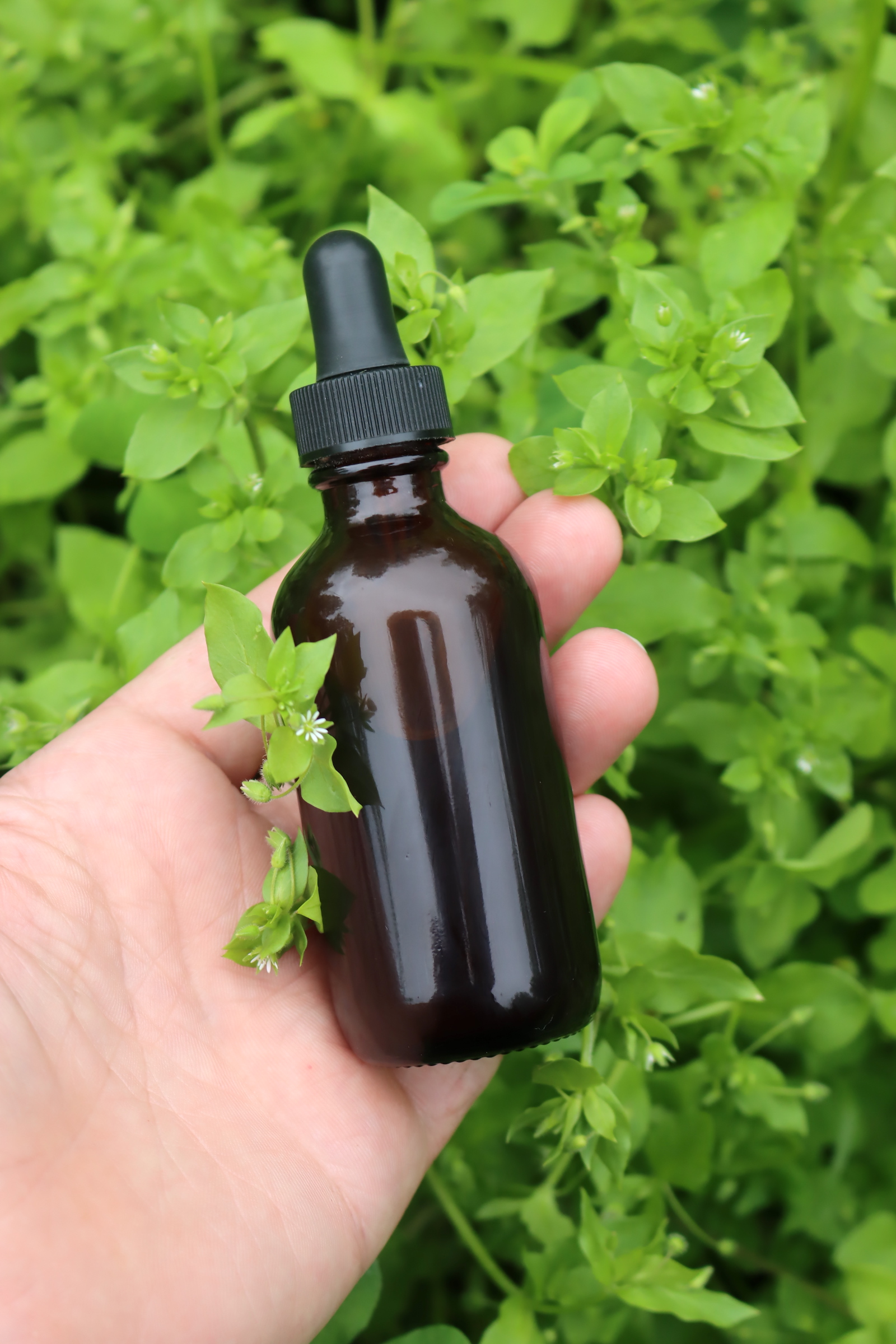
Parts Used for Tincture
To make a chickweed tincture, you want to harvest the aerial parts of the chickweed plant including the leaves, stems, and flowers. It’s best to harvest chickweed and other herbs in the morning after the dew has dried but before it has gotten hot if possible. Evening is also a good time.
Don’t use wild plants unless you are 100% certain of your identification.
Herbalists usually use fresh chickweed for tinctures, but if you can’t find any, you can purchase dried chickweed. One of my favorite herbal suppliers, Mountain Rose Herbs, carries dried chickweed.
If you’re working with fresh chickweed, roughly chop up your plants before tincturing. Chopping them up creates more surface area, allowing the alcohol to absorb more readily.
How to Make Chickweed Tincture
To make a Chickweed tincture, you’ll need the following ingredients and equipment:
- Fresh or Dried Chickweed
- Alcohol that’s 80 Proof/40% (many people choose vodka for a neutral flavor but other options like gin or rum work just as well)**
- One-pint mason jar with lid (an amber glass jar is ideal but if you keep it out of the light clear is fine)
- Funnel
- Cheesecloth
- Fine mesh sieve
- Amber glass tincture bottles (with dropper)
*The Herbal Academy’s tincture-making course specifically recommends using 70 to 95% alcohol for fresh herbs or 25% alcohol for dried chickweed.
**Never use isopropyl/rubbing alcohol for tinctures (or any other remedy you plan on ingesting). Even in small amounts, this type of alcohol is toxic and meant for external applications only. If you’re avoiding alcohol for any reason, consider making a herbal glycerite instead. Herbal vinegars are also a good choice and work well with chickweed.
Making the tincture is simple. Fill your mason jar ¾ full with your chopped fresh chickweed or about ½ full with dried chickweed.
Cover the chickweed with your chosen alcohol, ensuring it’s all fully submerged as well as possible. Seal your jar with an airtight lid to prevent evaporation.
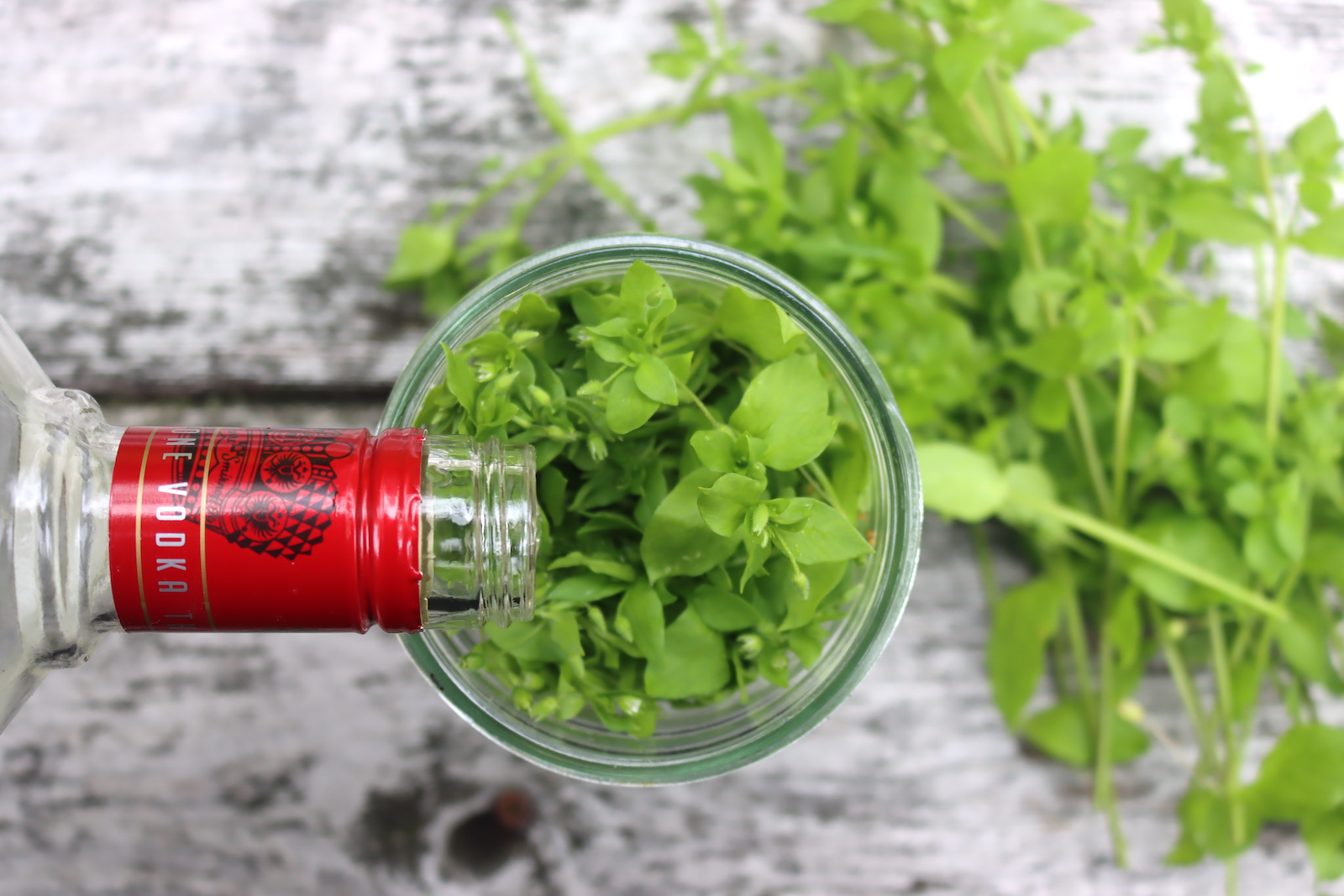
Set your tincture somewhere cool and dark. Always store your tinctures away from direct sunlight. Once a day, gently shake your tincture. Tinctures are forgiving so if you miss a day or two, it’s not the end of the world.
Tinctures take patience. Keep up the daily shaking and store your tincture somewhere dark for 4 to 6 weeks.
After about 4 to 6 weeks, it’s finally time to decant the tincture!
Use your fine mesh sieve or line a funnel with a few layers of cheesecloth to strain all of the chickweed out of the alcohol. Squeeze the plant material to ensure you get all of the alcohol out.
Pour your chickweed tincture into amber glass tincture bottles. Label each bottle with the name, date, and doseage. Masking tape and a marker make excellent, removable labels.
For more information on the general process, I’d suggest reading this guide to making herbal tinctures at home.
I know 4-6 weeks can be a long time to wait if you’re desperately needing relief now. There’s nothing wrong with Buying a Bottle of Chickweed Extract to use while your homemade tincture infuses. Purchased tinctures are a lot more expensive than DIY homemade ones, but they have the benefit of being ready when you need them, like now.
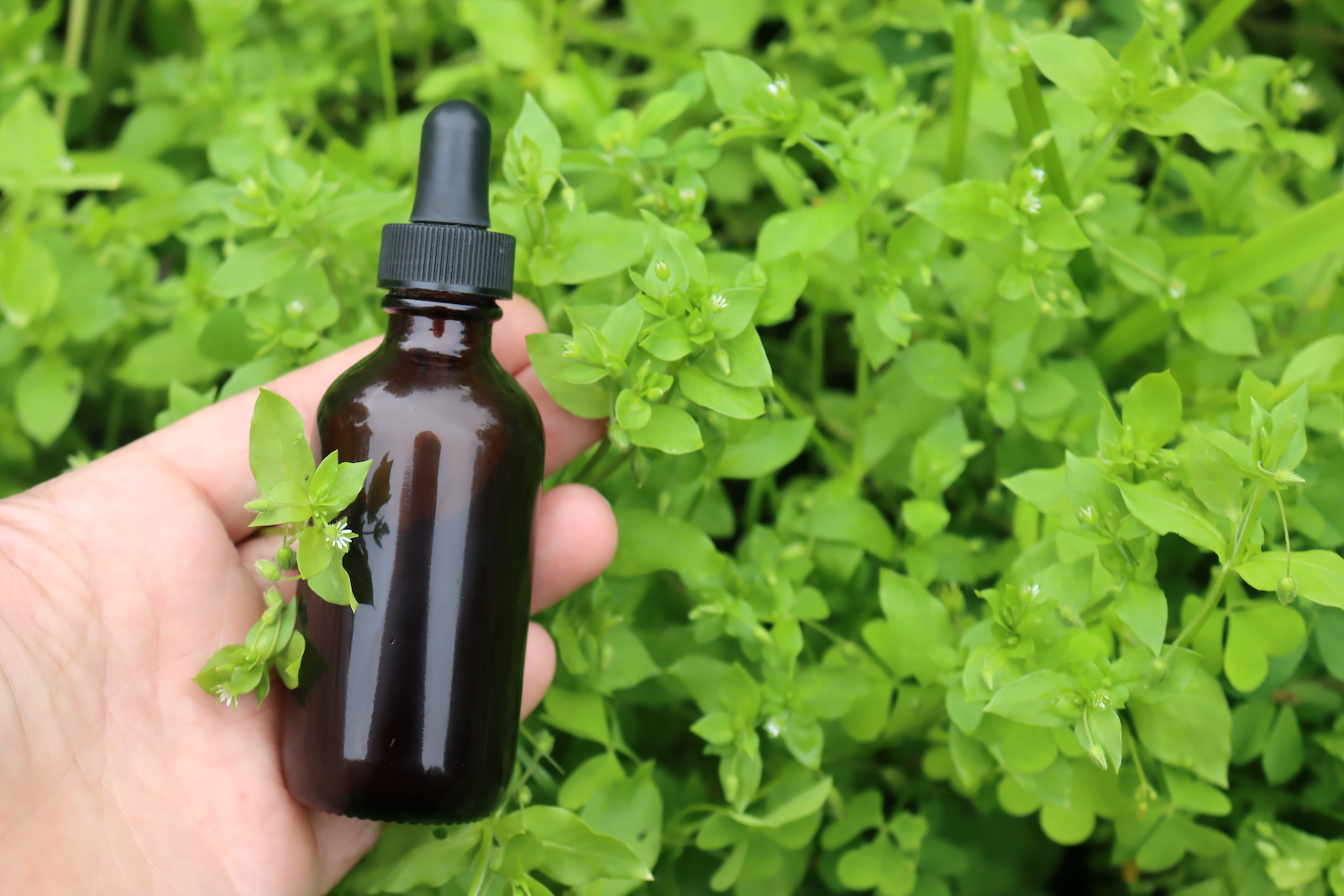
Chickweed Tincture Dosage
I always suggest consulting a clinical herbalist for an exact dosage based on your body and needs. They can also discuss any allergies and medical contraindications with you.
Generally, herbalists recommend taking 1 to 2 droppers full of chickweed tincture 2 to 3 times per day or as needed. You can also apply it topically by dabbing or spraying it onto the skin. Always start with a small dosage or small section of skin.
Chickweed Formulations
What you pair your chickweed tincture with will depend on its intended use. When using chickweed tincture for skin conditions herbalists often pair it with soothing remedies like calendula tincture and jewelweed tincture. Another good choice is nettle tincture which is also used to treat acne.
When using chickweed to support digestive health, you may want to pair it with digestive herbs like dandelion root tincture, chamomile tincture, lavender tincture, marshmallow tincture or ginger tincture.
To support respiratory health, try herbs like mullein or elderberry tincture, which provide immune support.
If you’re interested in the science behind combining herbs to enhance their effectiveness, I’d recommend taking this online course in Mastering Herbal Formulations from the Herbal Academy. It covers the science of blending herbs into homemade formulations in detail.
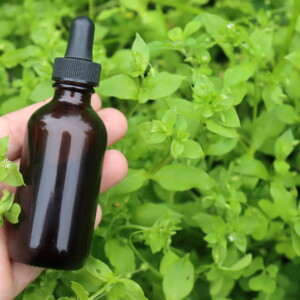
Chickweed Tincture
Equipment
Ingredients
- Chickweed fresh or dried
- Neutral Spirit such as vodka*
Instructions
- Fill a clean mason jar about 3/4 full with fresh chickweed or halfway if you're using dried chickweed.
- Pour your chosen alcohol (vodka is a great option) over the chickweed until it is fully submerged, ensuring the plant material is completely covered.
- Secure the lid tightly on the jar and give it a gentle shake to mix the contents. Store the jar in a cool, dark place, away from direct sunlight, and let it steep for 6 to 8 weeks.
- Give the jar a gentle shake every few days to encourage the extraction process. Daily shaking is ideal, but even shaking a few times a week will work. Keep an eye on the alcohol level to ensure the plant material stays submerged. If needed, top off with more alcohol to keep everything covered.
- After the infusion period, line a funnel with cheesecloth and place it over an amber glass tincture bottle. Pour the tincture and chickweed into the funnel, gently pressing to extract as much liquid as possible.
- Once the tincture is strained, label the bottle with the date, contents, dosage recommendations, and suggested uses. Store the tincture in a cool, dark place away from direct light.
Notes
For an alcohol-free tincture (glycerite)
Use dried chickweed and cover it with a mixture of 3 parts glycerin to 1 part distilled water. For fresh chickweed, skip the water and use only glycerin. Shake the jar daily, and follow the same decanting steps as with the alcohol-based tincture.Yield
The amount of tincture you end up with can vary depending on whether you're using fresh or dried plant material. With fresh herbs, you can expect to harvest just a bit more tincture than the amount of alcohol you initially add. However, when using dried herbs, the plant material will absorb some of the alcohol, so you'll end up with a little less tincture than the alcohol you started with. The amount of vodka needed will also depend on how densely you pack the jar. Generally, for a quart jar, you'll need about 2-3 cups of vodka, and for a pint jar, around 1 to 1 1/2 cups of vodka. Just be sure to keep the plant material fully submerged in the alcohol during the extraction process.Disclaimer on Homemade Herbal Remedies
I’ve been foraging wild medicines and treating my family with herbal remedies for the past 20 years, but I’m self-taught. Be aware that I am not a clinical herbalist, and this is based on my own research and personal experience using medicinal plants. I do not claim to have the experience that’d qualify me to advise you on your health, and I’m only providing this as a reference to encourage a broader interest in medicinal plants.
Please use this as a jumping-off point, but always do your own research and verify anything you read with multiple sources.
It’s always possible to have an adverse reaction to any medicinal herb, and plenty of people are allergic to even gentle herbs like chamomile. Always consult your doctor or a certified herbalist before trying any new medicinal plant. Often, they can have unintended reactions in combination with other herbs and supplements, and many herbs have side effects even when they are effective for their intended purpose.
If you are seriously interested in herbal medicine, I’d suggest investing in a course in herbal medicine, and I’d recommend any of the online courses put out by the Herbal Academy of New England. Specifically, the introduction to herbal medicine course and the family herbalist group of courses.
They also have a mushroom course, covering both medicinal and edible mushrooms, and a Botany and Wildcrafting Course. I’ve taken both and they’re informative, inspiring, and artfully presented.
Herbal Tinctures
Interested in making other homemade herbal tinctures?
Herbal Medicine Making
Herbal medicines don’t stop at tinctures! Learn how to make more homemade medicine…

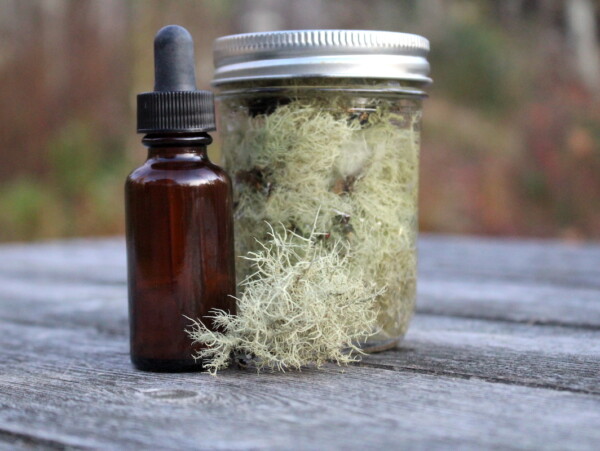
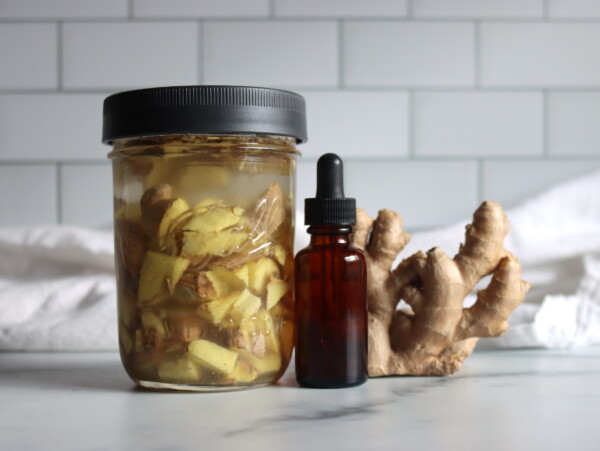
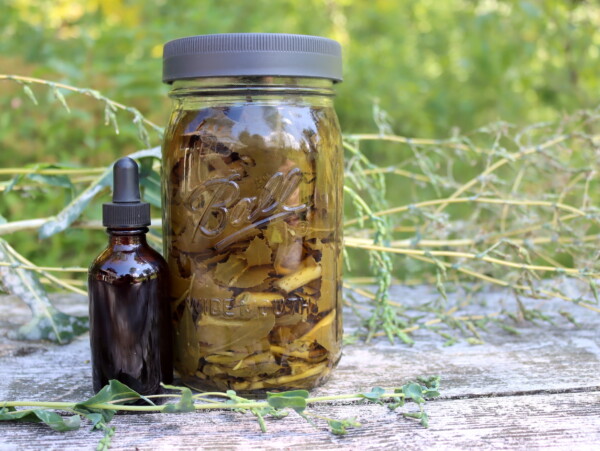
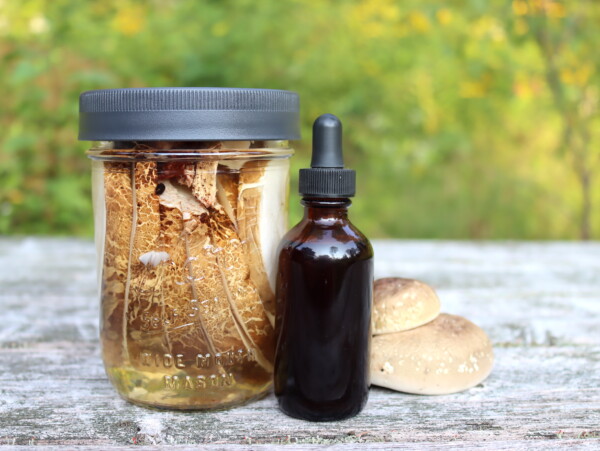
Is it ok to dry my chickweed and store in safe place for later uses. Also could I use the dry chickweed for tinture, I read somewhere that fresh plant matter is the only way?🤔 or the best way.
Some herbs can only be tinctured successfully fresh, namely st. johns wort. Those are the exception though, and most can be made with dried herbs. I haven’t’ ever heard anything specific about chickweed, thus I assume it falls with the majority and it’s still effective with the dried herbs (but I don’t have any conclusive info one way or the other).
How much should be taken if taking daily? As a general tonic and maybe help stablise weight gain ( I’m also trying to exercise and eat healthily not looking for a magic wand!)
I can’t find any good solid sources for this, but I did see several herbalists recommend a chickweed tincture dosage of 1 to 2 droppers full taken 3 times per day. That seems reasonable to me, but I’m not a clinical herbalist, and I couldn’t find any specific recommendations from someone who is. If it were me, I’d go with that because it’s similar to the dosage recommended for most tinctures, but use your best judgment (or consult a clinical herbalist in your area).
I’m kinda new to this weed although it grows well in my garden, it’s my understanding you will place the drops under the tongue and you should use 1 drop for about a week and then if you need to add 2 drops. You want to build yourself up to your body needs. Placing it under the tongue it gets into your system quickly.
Great Info… Enjoy your posts!
Thank you for this! I am getting ready to weedthe chickeeed from my flowerbeds, and now I have a good use for it!
Good info!